Ассоциация университетов лига плюща
Содержание:
- Ivy League rankings 2022
- Описание
- References
- What Is the Ivy League?
- Credits
- Terminology
- Competition and athletics
- Адаптивность и развитие
- Ivy League Acceptance Rate and Admissions
- Бизнес и менеджмент
- What Are the Ivy League Schools?
- How the Ivy League Compares With Other Colleges
- A Brief History of the Ivy League
- Ivy League rankings discussion
- Members
- Брюки чинос
- Are Ivy League Schools Really Better Than Other Universities?
- Вузы Лиги плюща
- U.S. presidents in the Ivy League
- Социология
Ivy League rankings 2022
The following table summarizes each Ivy League’s background—location, setting, undergraduate enrollment (i.e., student body size), endowment size—along with its ranking across the four major publications.
Numbers in parentheses correspond to each school’s place among every ranked U.S. college. On the other hand, numbers outside parentheses correspond to the relative rank of each Ivy League school within that list. For instance, in the Wall Street Journal rankings, Harvard is ranked the nation’s top college overall, which means that it’s also the highest-ranked Ivy League school. On the other hand, Yale is ranked fourth nationally, which is second highest among Ivy League schools.
Описание
История
Лига плюща — это изначально спортивное объединение восьми частных институтов высшего образования, расположенных на северо-востоке США. Этот термин также часто используется в отношении этих восьми школ как единой группы. Он подразумевает исключительность в качестве образования, выборность при поступлении и принадлежность к социальной элите.
Термин «Лига плюща» стал общепринятым с 1954 года после образования спортивного объединения NCAA Division I, когда американцы в значительной степени разделились на болельщиков разных университетских спортивных (футбольных) команд. Однако со временем понятие Лига плюща распространилось и на другие стороны жизни объединённых в ней университетов.
Университеты Лиги плюща (или просто «Плющи») постоянно находятся среди 15 лучших колледжей и университетов США по рейтингу журнала U.S. News and World Report. Так в 2010 году тройку лидеров среди лучших вузов США составили Гарвардский, Принстонский и Йельский университеты соответственно из Лиги плюща. Университеты Лиги также находятся среди самых богатых академических заведений мира, что позволяет им привлекать лучших студентов и преподавателей.
Университеты из Лиги плюща можно с полным основанием считать одними из ведущих научных центров страны, финансирование которых складывается из различных источников. Так, университеты из Лиги плюща обладают собственными фондами: например, эндаумент Гарвардского и Йельского университета в 2014 году составил 36,4 и 23,9 миллиардов долларов соответственно.
Университеты — члены Лиги

Штаты, в которых расположены университеты Лиги плюща

Расположение университетов Лиги плюща
Члены Лиги в алфавитном порядке:
- Брауновский университет (англ. Brown University) — Провиденс, штат Род-Айленд, основан в 1764 году под именем Колледж Род-Айленда;
- Гарвардский университет (англ. Harvard University) — Кембридж, штат Массачусетс, основан в 1636 году;
- Дартмутский колледж (англ. Dartmouth College) — Гановер, штат Нью-Гэмпшир, основан в 1769 году;
- Йельский университет (англ. Yale University) — Нью-Хейвен, штат Коннектикут, основан в 1701 году под именем Коллегиальная школа;
- Колумбийский университет (англ. Columbia University) — Нью-Йорк, штат Нью-Йорк, основан в 1754 году под именем Королевский колледж;
- Корнеллский университет (англ. Cornell University) — Итака, штат Нью-Йорк, основан в 1865 году;
- Пенсильванский университет (англ. University of Pennsylvania) — Филадельфия, штат Пенсильвания, основан в 1740 году под именем Филадельфийская академия;
- Принстонский университет (англ. Princeton University) — Принстон, штат Нью-Джерси, основан в 1746 году под именем Колледж Нью-Джерси.
References
- Axtell, James. The Making of Princeton University. Princeton University Press, 2006. ISBN 0691126860.
- Barreca, Gina. Babes in Boyland: A Personal History of Co-Education in the Ivy League. UPNE, 2005. ISBN 1584652993.
- Bernstein, Mark F. Football: The Ivy League Origins of an American Obsession. U Penn Press, 2001. ISBN 0812236270.
- Epstein, Joseph. Snobbery: The American Version. Houghton Mifflin, 2003. ISBN 0618340734.
- Goldstein, Richard. Ivy League Autumns: An Illustrated History of College Football’s Grand Old Rivalries. St. Martin’s Press, 1996. ISBN 0312146299.
- Leitch, Alexander. A Princeton Companion. Princeton University Press, 1978. ISBN 0691046549.
- Rudolph, Frederick. American College and University: A History. University of Georgia Press, 1990. ISBN 0820312843.
- Shapiro, Fred R. Yale Book of Quotations. Yale University Press, 2006. ISBN 0300107986.
- Wolff, Robert Paul. The Ideal of the University. Transaction Publishers, 1992. ISBN 156000603X.
What Is the Ivy League?
The Ivy Leagueeight schools that make up the Ivy League athletic conference.
- Brown University
- Columbia University
- Cornell University
- Dartmouth College
- Harvard University
- Princeton University
- University of Pennsylvania
- Yale University
Ivy League schools are all extremely selective private colleges in the Northeast. Also, the Ivy League is the only NCAA Division I athletic conference that doesn’t award athletic scholarships.
The term Ivy League has become synonymous with extremely prestigious, highly selective colleges. For this reason, many people incorrectly label other prestigious private colleges, such as MIT and Stanford, as Ivy League schools.
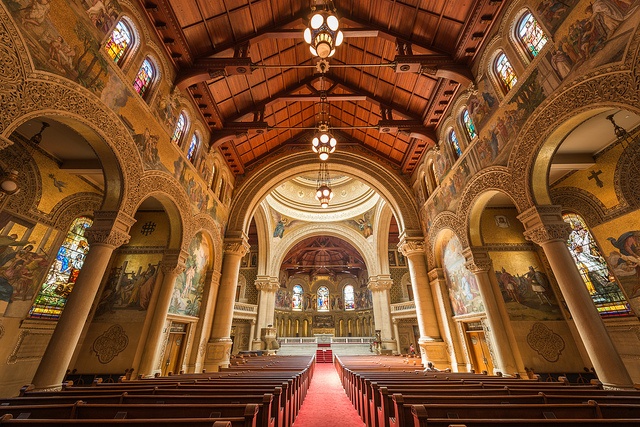
Stanford’s Memorial Church is impressive, but Stanford isn’t in the Ivy League. (Justin Kern/Flickr)
Credits
New World Encyclopedia writers and editors rewrote and completed the Wikipedia article
in accordance with New World Encyclopedia standards. This article abides by terms of the Creative Commons CC-by-sa 3.0 License (CC-by-sa), which may be used and disseminated with proper attribution. Credit is due under the terms of this license that can reference both the New World Encyclopedia contributors and the selfless volunteer contributors of the Wikimedia Foundation. To cite this article click here for a list of acceptable citing formats.The history of earlier contributions by wikipedians is accessible to researchers here:
Ivy_League history
The history of this article since it was imported to New World Encyclopedia:
History of «Ivy League»
Note: Some restrictions may apply to use of individual images which are separately licensed.
Terminology
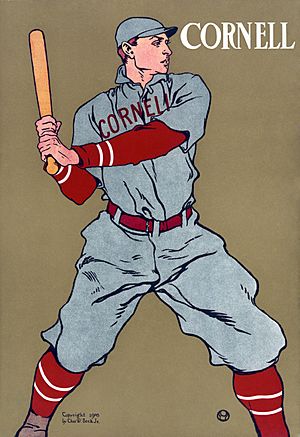
A Cornell Big Red college baseball player from 1908
The term Ivy League was first coined informally to refer to these schools which compete in both scholastics and sports, it also refers to the formal association of these schools in NCAA Division I athletic competition. (In some sports, notably baseball and tennis, the Ivy League teams also compete against «Army» and «Navy,» i.e. the United States Military Academy and the United States Naval Academy.)
The term «Ivy League» refers strictly to the original eight schools. However, the term Ivy Plus is sometimes used to refer to the eight plus Massachusetts Institute of Technology and Stanford University for purposes of alumni associations and university gatherings; however, these two schools are not part of the Ivy League.
Competition and athletics
Ivy champions are recognized in 33 men’s and women’s sports. In some sports, Ivy teams actually compete as members of another league, the Ivy championship being decided by isolating the members’ records in play against each other. (For example, the six league members who participate in ice hockey do so as members of ECAC Hockey; but an Ivy champion is extrapolated each year.) Unlike all other Division I basketball conferences, the Ivy League has no tournament for the league title; the school with the best conference record represents the conference in the Division I NCAA Basketball Tournament (with a playoff in the case of a tie).
On average, each Ivy school has more than 35 varsity teams. All eight are in the top 20 for number of sports offered for both men and women among Division I schools.
Princeton and Penn are longstanding men’s basketball rivals and «Puck Fenn» and «Puck Frinceton» t-shirts are worn at games. In only six instances in 51 years (from the 1955-56 season through the 2006-07 season) has neither Penn nor Princeton won at least a share of the Ivy League title in basketball, with each champion or co-champion 25 times. Penn has won 21 outright, Princeton 18 outright. Princeton has been a co-champion seven times, sharing four of those titles with Penn (these four seasons represent the only times Penn has been co-champion).
Rivalries exist between other Ivy league teams in other sports, including Cornell and Harvard in hockey (either team has won or shared the men’s title each of the last five years,) and Harvard and Penn in football (Penn and Harvard have each had two unbeaten seasons since 2001.) Harvard and Yale are celebrated football and crew rivals.
Although no longer as successful nationally as they once were in many of the more popular college sports, the Ivy League is still competitive in others. One such example is rowing. All of the Ivies have historically been among the top crews in the nation, and most continue to be so today. (Other historical top crews include California, Washington, Wisconsin, and Navy). On the men’s side, Harvard won the Intercollegiate Rowing Association Championships in 2003, 2004, 2005, and on the women’s side, Harvard and Brown won the 2003 and 2004 NCAA Rowing Championships, respectively. The Ivy League schools are also very competitive in both men’s and women’s hockey. In addition, no team other than Harvard or Princeton has won the men’s swimming conference title since 1972, although Yale, Columbia, and Cornell have shared the title with Harvard and Princeton during this time.
Адаптивность и развитие
Адаптивность выпускников к быстро меняющейся реальности — одна из глубинных целей объединения. «Вне зависимости от того, по какому направлению готовится человек в университете, его базовой социальной компетенцией является адаптивность к изменчивому миру, к новым ситуациям, к вызовам, с которым он сталкивается на протяжении жизни», — полагает Сергей Зуев.
Рубен Ениколопов, ректор Российской экономической школы, продолжает эту же логику: «В период вызванных пандемией серьезных глобальных трансформаций, которые во многом касаются и сферы образования, встает вопрос адаптации вузов к новым вызовам и реалиям. Основываясь на наших сильных сторонах и текущих достижениях, мы стремимся развиваться в соответствии с требованиями времени. И одно из направлений, которым будет заниматься Лига, — это совершенствование стандартов, необходимых для подготовки наиболее талантливых и мотивированных студентов в рамках индивидуализированных междисциплинарных программ. Мы также хотим развивать многосторонние сетевые образовательные и исследовательские практики, которые смогут стать еще одной точкой роста для российского высшего образования».
 «Мы сейчас переживаем период, когда понятия развития, справедливости и свободы переосмысливаются. Это относится не только к нам, но и ко всей “большой” ситуации. И представления о том, что есть свобода, в том числе академическая свобода и тесно связанное с ней человеческое и институциональное развитие, — это и есть глубинная ценностная платформа для нашей ассоциации»
«Мы сейчас переживаем период, когда понятия развития, справедливости и свободы переосмысливаются. Это относится не только к нам, но и ко всей “большой” ситуации. И представления о том, что есть свобода, в том числе академическая свобода и тесно связанное с ней человеческое и институциональное развитие, — это и есть глубинная ценностная платформа для нашей ассоциации»
Признавая ценность адаптивности, участники ассоциации отмечают, что она более универсальна, чем специфична. «Я не знаю, какой из существующих университетов отказался бы от высокой адаптивности. Все хотят видеть своих выпускников личностями, устойчивыми к ситуациям неопределенности и быстрых изменений. Это характерно не только для нас, — говорит Сергей Зуев. — Нас объединяет сама идея развития, если подходить к ней не в привычно стандартном залоге. Слово “развитие” в последнее время слишком часто и не всегда по делу употребляют, но если к нему подходить достаточно строго и действительно обсуждать, что такое человеческое развитие и как университет может этому способствовать, то да, между нашими университетами есть очень много общего. Нам всем близки идеи развития, идущие из глубины общей европейской культуры и европейских представлений о должном. Мы сейчас переживаем период, когда понятия развития, справедливости и свободы переосмысливаются. Это относится не только к нам, но и ко всей “большой” ситуации. И представления о том, что есть свобода, в том числе академическая свобода и тесно связанное с ней человеческое и институциональное развитие, — это и есть глубинная ценностная платформа для нашей ассоциации», — заключил Сергей Зуев.
Ivy League Acceptance Rate and Admissions
Gaining admission to an Ivy League school isn’t easy. In 2020, five Ivy League schools admitted less than 7% of applicants. Harvard — the most selective Ivy League school — admitted just 4.9% of its more than 40,000 applicants for the class of 2024.
The cost of an Ivy League education exceeds $50,000 in tuition and fees at every school. Harvard, which charges around $52,000 per year, represents the most affordable option, while Columbia’s tuition and fees stand at nearly $62,000 per year.
Fortunately, the Ivies provide extensive financial aid packages to students, mainly thanks to their large endowments. At Brown, Columbia, and Cornell, students whose families make under $60,000 a year receive free tuition.
Despite being incredibly expensive, Ivy League schools offer some of the most generous financial aid packages to undergraduates.
The same applies at Harvard and Yale for family incomes below $65,000 and $75,000, respectively, and at Dartmouth for family incomes below $100,000. Princeton offers free tuition to anyone with a family income of less than $160,000 per year.
As a result of financial aid packages, few Ivy League students pay the full listed price for tuition and fees. At Yale, for instance, the average scholarship in 2018 was $52,800.
All Ivy League schools admit students on a need-blind basis, meaning they do not consider an applicant’s ability to pay during the admissions process. Nevertheless, many Ivy League students come from wealthy families. Data from The New York Times reveals that two-thirds of Yale and Harvard students hail from households in the top 20% of earnings.
Бизнес и менеджмент
- Введение в бухгалтериюПенсильванский университет на Coursera
- Введение в маркетингПенсильванский университет на Coursera
- Введение в корпоративные финансыУортонская школа бизнеса на Coursera
- 5 смертельных угроз для кризисного менеджментаКолумбийский университет в Canvas Network
- Переговоры для новичков: как стать принципиальным и убедительным переговорщикомЙельский университет на Coursera
- Мировой финансовый кризисЙельский университет на Coursera
- Стратегия в искусстве и культуреПенсильванский университет на Coursera
- Аналитика процессаПенсильванский университет на Coursera
- Финансовые рынкиЙельский университет на Coursera
- Введение в операционный менеджментПенсильванский университет на Coursera
- Глобальные тренды в области человеческих ресурсовКолумбийский университет на Canvas Network
- Социальная аналитикаПенсильванский университет на Coursera
- Стратегии социального влияния: инструменты для предпринимателей и инноваторовПенсильванский университет на Coursera
- Вирусный маркетинг: как «заразить» контентомПенсильванский университет на Coursera
- Начальный курс по совместным образовательным услугамКолумбийский университет на Canvas Network
What Are the Ivy League Schools?
The Ivy League is made up of eight private schools in the Northeast. Here’s an alphabetical list of the Ivy League schools, along with their respective locations, student enrollments, and acceptance rates:
| School | Location | Undergraduate Enrollment | Acceptance Rate |
|---|---|---|---|
| Brown University | Providence, RI | 7,160 | 7% |
| Columbia University | New York, NY | 8,221 | 5% |
| Cornell University | Ithaca, NY | 15,043 | 11% |
| Dartmouth College | Hanover, NH | 4,459 | 8% |
| Harvard University | Cambridge, MA | 10,063 | 5% |
| Princeton University | Princeton, NJ | 5,422 | 6% |
| University of Pennsylvania | Philadelphia, PA | 11,872 | 8% |
| Yale University | New Haven, CT | 6,092 | 6% |
Source: National Center for Education Statistics
The Ivy League universities vary in size, with each institution enrolling anywhere between 4,500 and 15,000 undergraduates.
Dartmouth is the smallest Ivy, with a total enrollment of just about 6,600 students. Meanwhile, Columbia and Harvard enroll the most students of any Ivy, with over 30,000 undergraduate and graduate students each.
How the Ivy League Compares With Other Colleges
Ivy League schools may have prestige and history, but they aren’t the only great institutions of higher education in the U.S. Schools like Stanford, MIT, and the University of Chicago often outrank Ivies in terms of academics, but since they aren’t in the same athletic conference, they technically aren’t Ivy League schools.
Other schools, like Stanford and MIT, are just as prestigious and selective as the Ivies.
Similarly, the so-called «Little Ivies,» which include Amherst College, Bowdoin College, and Wesleyan University, emphasize a liberal arts education and boast smaller undergraduate enrollments than the eight Ivy League members.
Then there are elite public institutions like UC Berkeley, the University of Michigan, UCLA, and the University of Virginia. These schools, often dubbed the «Public Ivies,» offer high-quality education at public university tuition rates.
The most selective colleges in 2020 include several Ivies but also renowned institutions like Caltech, Northwestern University, Pomona College, and Duke University, which all admit less than 10% of applicants.
A Brief History of the Ivy League
At a basic level, the Ivy League is an athletic conference consisting of eight private colleges and universities. But the Ivy League refers to much more than just college athletics.
As an athletic conference, the Ivy League officially began in 1954.
The schools that comprise the Ivy League boast centuries of history, tradition, and prestige. Located in the Northeast, all but one of the Ivies predates the American Revolution. Harvard, for example, was established in 1636, making it the oldest institution of higher education in the United States.
The phrase «Ivy League,» however, didn’t appear until three centuries later. In 1933, a sports writer named Stanley Woodward wrote about the football season at the «ivy schools,» and the name quickly caught on. The athletic conference officially began two decades later in 1954.
Nowadays, most people associate the term «Ivy League» with extremely competitive, renowned universities and use it as a benchmark for measuring high-quality education.
Ivy League rankings discussion
“The Big Three” rank among the top Ivy League schools on nearly every list
Historically, “The Big Three”—Harvard, Yale, and Princeton—have comprised the top three institutions across the board. However, more recently, Columbia and Brown have also made appearances in the top 3.
Selectivity is associated with each school’s desirability. The more selective a school is, the more likely it is that your child will list it as their dream school. Moreover, graduate programs, employers, and others who might one day evaluate your child’s resume will view higher-ranked schools slightly more favorably than lower-ranked ones. That said, all Ivy League schools are excellent. Evaluators will be impressed by your child’s attendance of any of them.
Overall rankings are lacking when it comes to determining “fit”
Most people would agree that Harvard, Yale, and Princeton are considered the most elite and prestigious Ivy League schools. However, based on your child’s subjects of interest, preferred setting, and opportunities, some schools might be a better fit than others.
For instance, if your child is interested in studying political science or drama, Yale would be an excellent choice. On the other hand, if your child wants to pursue engineering or hotel management, Cornell might be the better fit for them.
In addition, it’s important to consider each school’s setting when applying to Ivy League schools. Penn, for instance, might offer more immediate access to working with low-income communities than Princeton. Moreover, whether your child wants to attend school in an urban, suburban, or rural setting should influence their choice on where to apply. For example, do they want to live in a big city or be as close to nature as possible?
Student body size is another meaningful variable for your child to think about. Six of the eight Ivy League schools enroll somewhere between 4,000 and 7,000 undergraduate students, whereas only two—Penn and Cornell—typically enroll over 10,000 undergrads. Whether your child wants to be part of a relatively small or large student body might contribute to their overall happiness and social opportunities during college.
(Note: Enrollment figures above reflect each school’s Fall 2020 enrollment, at which time many colleges and universities were under-enrolled due to the COVID-19 pandemic. Fall 2019 numbers show some Ivy League schools enrolling as many as 1,500 more students.)
Finally, campus culture varies from school to school. For example, Harvard promotes close relationships among students through its residential college system, whereas Brown is widely regarded as the most progressive Ivy League school.
Ivy League schools aren’t the only prestigious schools in the country
Although the Ivy League is often used synonymously with “best colleges”, there are a number of other institutions that are just as academically and reputationally elite. In other words, your child does not have to attend an Ivy League school in order for them to be considered among the country’s highest-achieving students.
Members
The term Ivy League is now most commonly used to refer to eight universities who formed the «Ivy League» athletic conference. The eight member institutions are all located in the Northeast region of the United States and are privately owned and controlled. Undergraduate enrollments among the Ivy League schools range from about 4,000 to 14,000 (Dartmouth and Cornell respectively), making them larger than those of a typical private liberal arts college and smaller than a typical public state university. Ivy League university financial endowments are in the billions of dollars, ranging from Brown’s over $2 billion to Harvard’s over $30 billion, the largest financial endowment of any academic institution in the world.
| Institution | Location | Athletic Nickname | Full-time enrollment | Motto |
|---|---|---|---|---|
| Brown University | Providence, Rhode Island | Bears | 8,025 | In deo speramus(«In God we hope») |
| Columbia University | New York, New York | Lions | 19,694 | In lumine Tuo videbimus lumen(«In Thy light shall we see the light») |
| Cornell University | Ithaca, New York | Big Red | 20,638 | «I would found an institution where any person can find instruction in any study» |
| Dartmouth College | Hanover, New Hampshire | Big Green | 5,753 | Vox clamantis in deserto(«A voice crying in the wilderness») |
| Harvard University | Cambridge, Massachusetts | Crimson | 20,042 | Veritas(«Truth») |
| Princeton University | Princeton, New Jersey | Tigers | 7,242 | Dei sub numine viget(«Under God’s power she flourishes») |
| University of Pennsylvania | Philadelphia, Pennsylvania | Quakers | 23,980 | Leges sine moribus vanae(«Laws without morals are useless») |
| Yale University | New Haven, Connecticut | Bulldogs | 11,416 | אורים ותומיםLux et veritas(«Light and truth») |
Брюки чинос
Для непосвященных, брюки чинос — это, по сути, брюки из более легкой саржевой ткани. Слово «чинос» часто ассоциируются с цветом хаки, но на самом деле чинос могут быть любого цвета. Хаки — самый популярный цвет, но и «красный нантакет», и «розовый лосось» вовсе не редкость. Хотя во время шоппинга вы встретите брюки чинос со складками, в моде Преппи существуют только фасоны без складок в передней части брюк.
Комфорт — это ключ к успеху, поэтому единственное правило, когда дело доходит до выбора брюк чинос — это подобрать пару, которая вам понравится. Если вы хотите пойти по классическому пути, то зауженные брюки чинос-стрейч от J. Crew — это потрясающий (и доступный!) выбор. Но если вы хотите чего-то более эксклюзивного, вам подойдет Vineyard Vines. Часто можно увидеть, как мужчины носят их с подворотами, но это скорее личное предпочтение, чем правило.
Are Ivy League Schools Really Better Than Other Universities?
The members of the Ivy League may be some of the most prestigious colleges in the country, but will they actually give you a better education than other schools with similar acceptance rates?
The main reason an Ivy League school might be better than any other top-tier university is due to name recognition. A diploma from an Ivy League college may open doors for you because employers and graduate school admissions officers will know immediately that you went to an extremely competitive school. Ivy League universities have great international reputations that not many other colleges can claim. You’ll also get the opportunity to network with highly successful and influential alumni.
Still, you should keep in mind that there are major differences between schools within the Ivy League in terms of reputation. The traditional top three, Harvard, Yale, and Princeton, are seen as somewhat more impressive than less selective Ivies like Cornell or Dartmouth. They’re all well-respected schools, but getting into one Ivy League school isn’t equivalent to getting into all of them.
For this and other reasons, it’s risky to assume that Ivy League grads will end up more «successful» overall than other students. Success is more about a student’s inherent drive and ability than which school he or she ends up attending. One study found that «the better predictor of earnings was the average SAT scores of the most selective school a teenager applied to and not the typical scores of the institution the student attended.» In other words, students who applied to Ivy League-caliber schools but ended up attending less selective colleges fared no worse than their elite school counterparts.
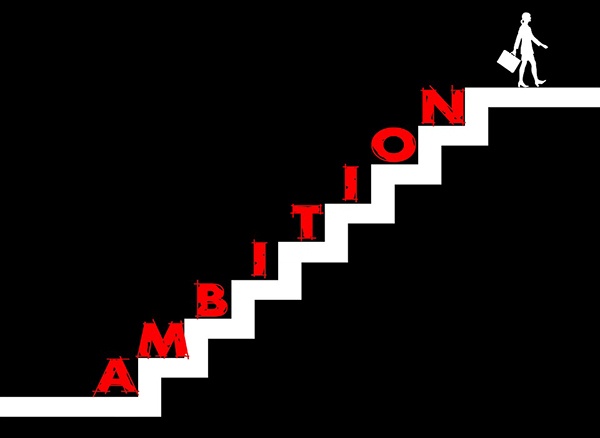 Ambition is one of the most important factors in success. It’s also a good idea to carry a heavy briefcase at all times. People are more likely to hire you if you have one disproportionately strong arm.
Ambition is one of the most important factors in success. It’s also a good idea to carry a heavy briefcase at all times. People are more likely to hire you if you have one disproportionately strong arm.
The truth is that Ivy League colleges don’t always have the highest quality of instruction for undergraduate students. Overall, they tend to be very focused on doing academic research to maintain their position at the forefront of academia. Professors may be less interested in teaching than they are in their personal projects; alternatively, schools may end up hiring tons of adjunct faculty to keep costs down. You could end up with a better learning experience at a small, highly selective college that exclusively enrolls undergraduate students because the professors are there primarily to teach.
Ivy League colleges also aren’t the only schools where you’ll derive inspiration from the amazing things the students around you are doing. There are many selective colleges and universities around the country that attract highly motivated students and have learning environments that will challenge you. Though the Ivies have high concentrations of intense students, they definitely don’t have a monopoly on undergraduate talent.
In summary, here’s a chart that details how different types of non-Ivy universities compare to Ivy League schools. A plus sign indicates that this type of college is arguably better than Ivy League schools in the category specified on the left. A minus sign indicates that it’s not quite as good. An equals sign indicates that the type of college is comparable to the colleges of the Ivy League.
|
Top Tier Research Universities (Stanford, MIT) |
Top Tier Small Teaching Colleges (Amherst, Pomona) |
Slightly Lower Ranked Universities (16-30 US News) |
|
| Reputation (National and International) | = | – | – |
|
Undergraduate Teaching |
= | + | = |
| Research Opportunities | = | – | = |
| Graduate School Potential | = | = | – |
| Caliber of Students | = | = | – |

Want to get into Harvard or your personal top choice college?
We can help. PrepScholar Admissions is the world’s best admissions consulting service. We combine world-class admissions counselors with our data-driven, proprietary admissions strategies. We’ve overseen thousands of students get into their top choice schools, from state colleges to the Ivy League.
Learn more about PrepScholar Admissions to maximize your chance of getting in.

Вузы Лиги плюща
Термин Лига плюща начал применяться в 1954 году, когда было сформировано спортивное объединение NCAA Division I. В ассоциацию входят 8 университетов:
- Брауновский, Brown University, Провиденс, штат Род-Айленд, 1764 год;
- Гарвардский, Harvard University, Кембридж, штат Массачусетс, 1636 год;
- Йельский, Yale University, Нью-Хейвен, штат Коннектикут, 1701 год;
- Колумбийский, Columbia University, Нью-Йорк, штат Нью-Йорк, 1754 год;
- Корнеллский, Cornell University, Итака, штат Нью-Йорк, 1865 год;
- Пенсильванский, University of Pennsylvania, Филадельфия, штат Пенсильвания, 1740 год;
- Принстонский, Princeton University, Принстон, штат Нью-Джерси, 1746 год;
- Дартмутский колледж, Dartmouth College, Гановер, штат Нью-Гэмпшир, 1769 год.
В 1950-е годы престиж этих школ был действительно обусловлен их достижениями в сфере спорта. Университеты существовали еще с 17 века, а спортивная лига в той форме, в какой она есть сегодня, начала формироваться лишь в 1930-е годы. Тогда же появился элегантный стиль одежды студентов. Богатые и известные родители одевали будущих выпускников в лучшие наряды.
1 of 3
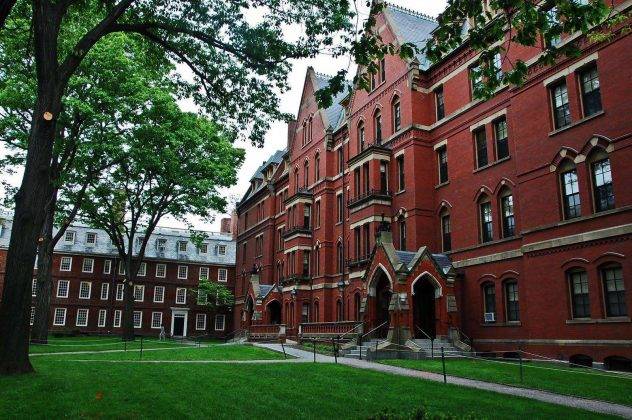
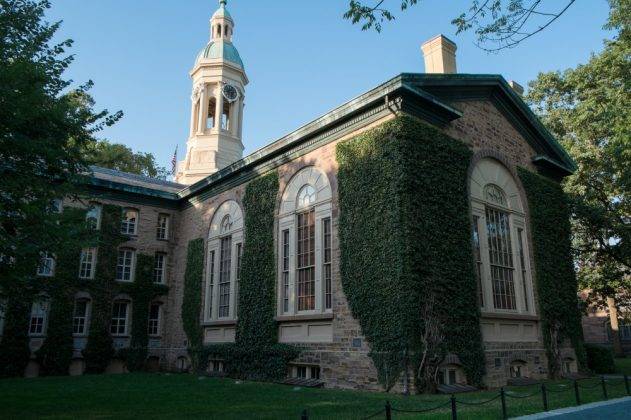
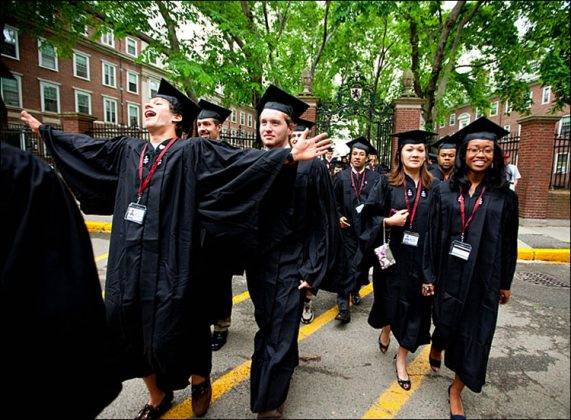
Джер Даниэлл, профессор из Дартмутского колледжа, говорит, что существует несколько теорий названия Ivy League. Есть версия, что изначально она называлась IV League, поскольку тогда туда входили 4 школы. Но цифры переправили на буквы практически случайно. Есть вторая более правдоподобная версия. Побеги плюща обвивали здания университетов. Поэтому журналист и назвал их колледжами плюща.
Чтобы попасть в эти учебные заведения, нужно быть, что называется, голубых кровей или иметь выдающиеся заслуги в спорте. Конечно, и этого может оказаться мало, если не сдать соответствующие экзамены. При поступлении также учитывается участие в различных программах еще в школе. По сути, надо быть активным и лучшим учеником с начальных классов, чтобы попасть сюда. Не стоит забывать про стоимость обучения, которая составляет около 50 000 долларов в год, плюс питание, проживание и прочие расходы.
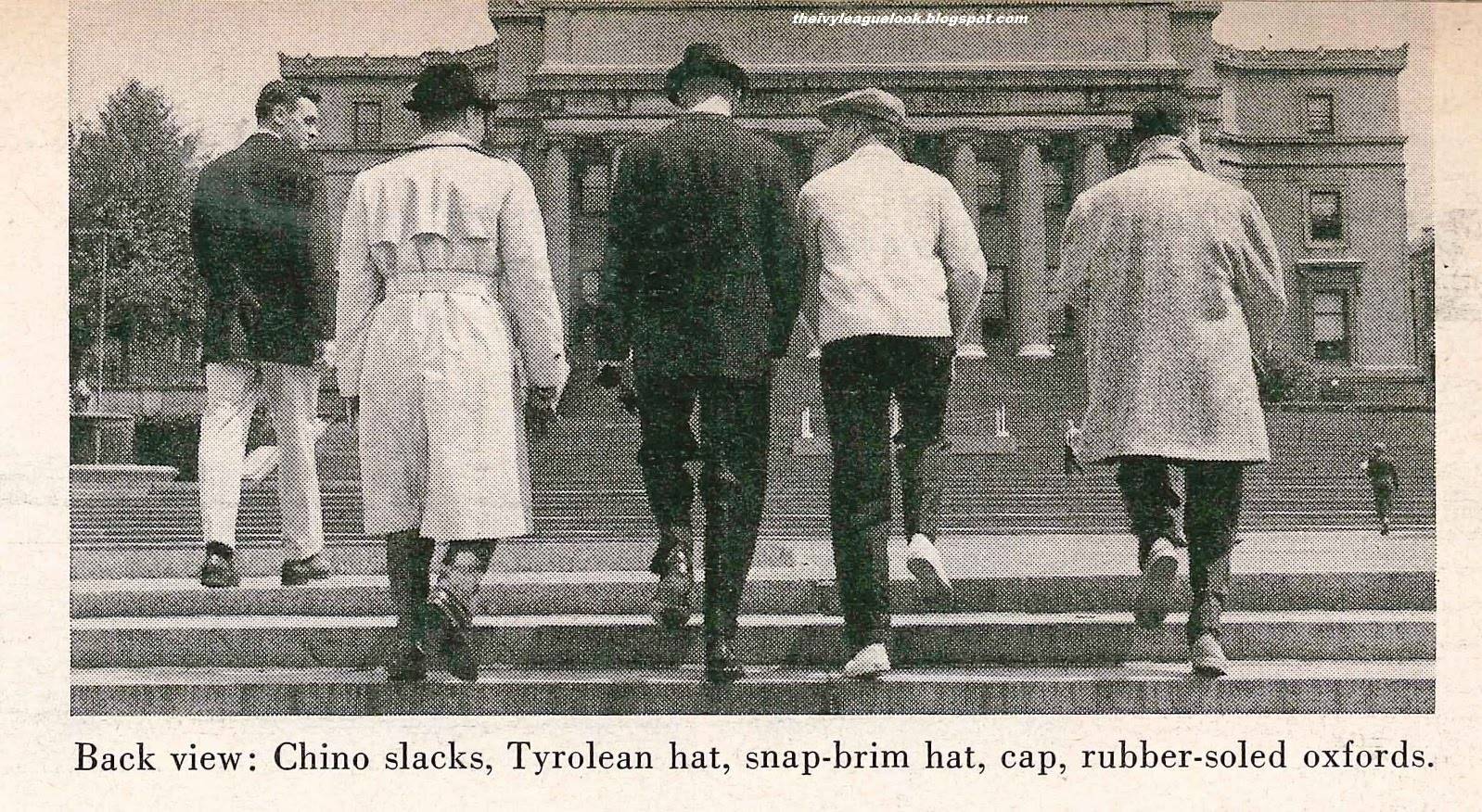
Лига плюща исторически воспринималась как связанная не только с академическим совершенством ассоциация, но и с социальным статусом. В лигу входили пять президентов США: Джордж Буш-старший (Йельский университет), Билл Клинтон (Юридическая школа Йельского университета), Джордж У. Буш (Йельский университет, Гарвардская школа бизнеса), Барак Обама (студент Колумбии, Гарвардская юридическая школа) и Дональд Трамп (школа бизнеса при Пенсильванском университете). Однажды в преддверии выборов один из журналистов сказал:
«Все, что избиратели знают о Лиге Плюща, это то, что университеты полны богатых, причудливых и, возможно, опасных интеллектуалов, которые никогда не садятся ужинать в нижнем белье, независимо от того, насколько жаркая погода».
U.S. presidents in the Ivy League
Of the forty-four men who have served as President of the United States, fifteen have graduated from an Ivy League university. Twelve presidents have earned Ivy undergraduate degrees. Three of these were transfer students: Donald Trump transferred from Fordham University, Barack Obama transferred from Occidental College and John F. Kennedy transferred from another Ivy, Princeton, where he had been class of 1939. John Adams was the first president to graduate from college, graduating from Harvard in 1755.
| President | School(s) | Graduation year |
|---|---|---|
| John Adams | Harvard University | 1755 |
| James Madison | Princeton University | 1771 |
| John Quincy Adams | Harvard University | 1787 |
| William Henry Harrison | University of Pennsylvania | (withdrew) |
| Rutherford B. Hayes | Harvard Law School | 1845 |
| Theodore Roosevelt | Harvard University Columbia Law School |
1880 (withdrew) (Awarded J.D. in 2008, class of 1882) |
| William Howard Taft | Yale University | 1878 |
| Woodrow Wilson | Princeton University | 1879 |
| Franklin D. Roosevelt | Harvard University Columbia Law School |
1903 (withdrew) (Awarded J.D. in 2008, class of 1907) |
| John F. Kennedy | Princeton University Harvard University |
(withdrew) 1940 |
| Gerald Ford | Yale Law School | 1941 |
| George H. W. Bush | Yale University | 1948 |
| Bill Clinton | Yale Law School | 1973 |
| George W. Bush | Yale UniversityHarvard Business School | 1968 1975 |
| Barack Obama | Columbia University Harvard Law School |
1983 1991 |
| Donald Trump | University of Pennsylvania | 1968 |
Социология
-
- ПравосудиеГарвардский университет на edX
- Введение американское правоПенсильванский университет на Coursera
- Основные конституционные понятия и кейсы Верховного судаПенсильванский университет на Coursera
- Создание и значение средневековых манускриптовГарвардский университет на edX
- Ненаписанная конституция СШАЙельский университет на Coursera
- Буддизм и современная психологияПринстонский университет на Coursera
- История вокруг васГарвардский университет на edX
- Моральные основания политикиЙельский университет в Coursera
- Готическая эпоха печатиГарвардский университет на edX
- Контрактное право: от доверия к обещанию, от обещания к контрактуГарвардский университет на edX
- Микроэкономика: когда рынки ошибаютсяПенсильванский университет на Coursera
- История книгопечатания в XV-XVIIГарвардский университет на edX
- История книгопечатания в Западной Европе, Азии и на Востоке XVII-XVIII векахГарвардский университет на edX
- Свитки в эпоху книгиГарвардский университет на edX
- Защита интеллектуальной собственностиПенсильванский университет на edX
- История средневековой медицины в древнееврейских текстахПенсильванский университет на edX
- Спор как инструмент социальных измененийГарвардский университет на edX
- Революционные идеи: справедливость, равенство, свобода Пенсильванский университет на Coursera
- Парадоксы войныПринстонский университет на Coursera
- Законы, медицинское обоснование и этика репродуктивных технологий и генетикиГарвардский университет на Coursera
- Микроэкономика: сила рынковПенсильванский университет на Coursera